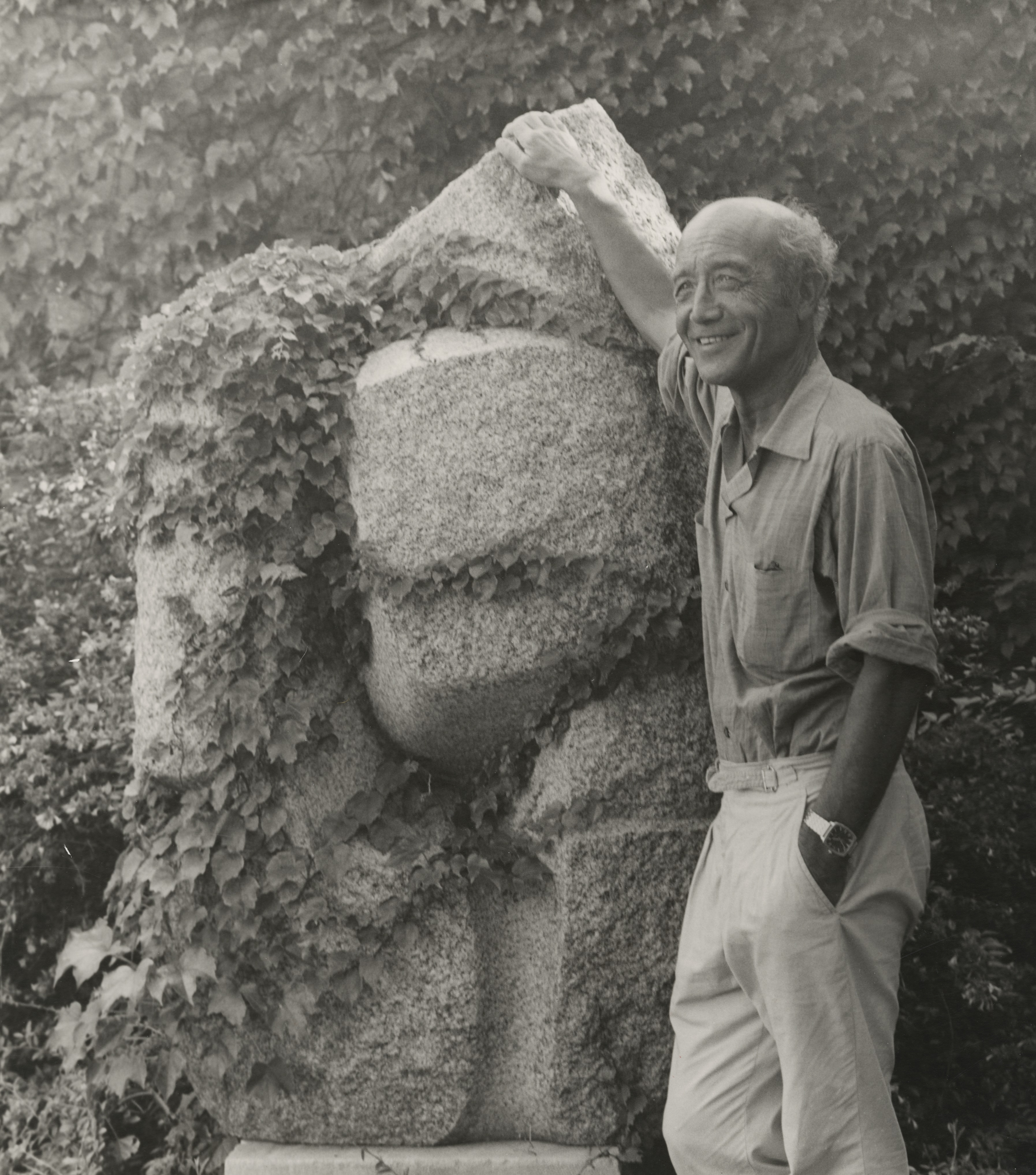|
Sinai (Noguchi)
''Sinai'' is a public artwork by the Japanese American artist Isamu Noguchi, located at the Lynden Sculpture Garden, which is near Milwaukee, Wisconsin, United States. ''Sinai'' is a cast-iron sculpture measuring high, wide, and deep. It is part of a series of work created between the 1967 and 1969, during which time Noguchi was collaborating with the Japanese stone carver Masatoshi Izumi. Description ''Sinai'' is a cast iron sculpture (1 of 6 casts) typical of iron modernist art sculpture of the late 1960s. The sculpture consists of a circular biomorphic ring form with square protrusions on the upper half. The sculpture is a dark iron, almost black in appearance. Noguchi was heavily influenced by Constantin Brâncuși's simplified and reduced forms that get at the essence of materials because of their minimal handling. His body of work in this time period is enigmatic; it becomes difficult to discern what the forms are or from where their inspiration was manifested. This eni ... [...More Info...] [...Related Items...] OR: [Wikipedia] [Google] [Baidu] |
Isamu Noguchi
was an American artist and landscape architect whose artistic career spanned six decades, from the 1920s onward. Known for his sculpture and public artworks, Noguchi also designed stage sets for various Martha Graham productions, and several mass-produced lamps and furniture pieces, some of which are still manufactured and sold. In 1947, Noguchi began a collaboration with the Herman Miller company, when he joined with George Nelson, Paul László and Charles Eames to produce a catalog containing what is often considered to be the most influential body of modern furniture ever produced, including the iconic Noguchi table which remains in production today. His work lives on around the world and at the Isamu Noguchi Foundation and Garden Museum in New York City. Biography Early life (1904–1922) Isamu Noguchi was born in Los Angeles, the son of Yone Noguchi, a Japanese poet who was acclaimed in the United States, and Léonie Gilmour, an American writer who edited much ... [...More Info...] [...Related Items...] OR: [Wikipedia] [Google] [Baidu] |
Merce Cunningham
Mercier Philip "Merce" Cunningham (April 16, 1919 – July 26, 2009) was an American dancer and choreographer who was at the forefront of American modern dance for more than 50 years. He frequently collaborated with artists of other disciplines, including musicians John Cage, David Tudor, Brian Eno, and graphic artists Robert Rauschenberg, Bruce Nauman, Andy Warhol, Roy Lichtenstein, Frank Stella, and Jasper Johns; and fashion designer Rei Kawakubo. Works that he produced with these artists had a profound impact on avant-garde art beyond the world of dance. As a choreographer, teacher, and leader of the Merce Cunningham Dance Company, Cunningham had a profound influence on modern dance. Many dancers who trained with Cunningham formed their own companies. They include Paul Taylor, Remy Charlip, Viola Farber, Charles Moulton, Karole Armitage, Deborah Hay, Robert Kovich, Foofwa d'Imobilité, Kimberly Bartosik, Flo Ankah, Jan Van Dyke, Jonah Bokaer, and Alice Reye ... [...More Info...] [...Related Items...] OR: [Wikipedia] [Google] [Baidu] |
Iron Sculptures In The United States
Iron () is a chemical element with symbol Fe (from la, ferrum) and atomic number 26. It is a metal that belongs to the first transition series and group 8 of the periodic table. It is, by mass, the most common element on Earth, right in front of oxygen (32.1% and 30.1%, respectively), forming much of Earth's outer and inner core. It is the fourth most common element in the Earth's crust. In its metallic state, iron is rare in the Earth's crust, limited mainly to deposition by meteorites. Iron ores, by contrast, are among the most abundant in the Earth's crust, although extracting usable metal from them requires kilns or furnaces capable of reaching or higher, about higher than that required to smelt copper. Humans started to master that process in Eurasia during the 2nd millennium BCE and the use of iron tools and weapons began to displace copper alloys, in some regions, only around 1200 BCE. That event is considered the transition from the Bronze Age to the Iron Age. In th ... [...More Info...] [...Related Items...] OR: [Wikipedia] [Google] [Baidu] |
Sculptures In Wisconsin
Sculpture is the branch of the visual arts that operates in three dimensions. Sculpture is the three-dimensional art work which is physically presented in the dimensions of height, width and depth. It is one of the plastic arts. Durable sculptural processes originally used carving (the removal of material) and modelling (the addition of material, as clay), in stone, metal, ceramics, wood and other materials but, since Modernism, there has been an almost complete freedom of materials and process. A wide variety of materials may be worked by removal such as carving, assembled by welding or modelling, or moulded or cast. Sculpture in stone survives far better than works of art in perishable materials, and often represents the majority of the surviving works (other than pottery) from ancient cultures, though conversely traditions of sculpture in wood may have vanished almost entirely. However, most ancient sculpture was brightly painted, and this has been lost. [...More Info...] [...Related Items...] OR: [Wikipedia] [Google] [Baidu] |


